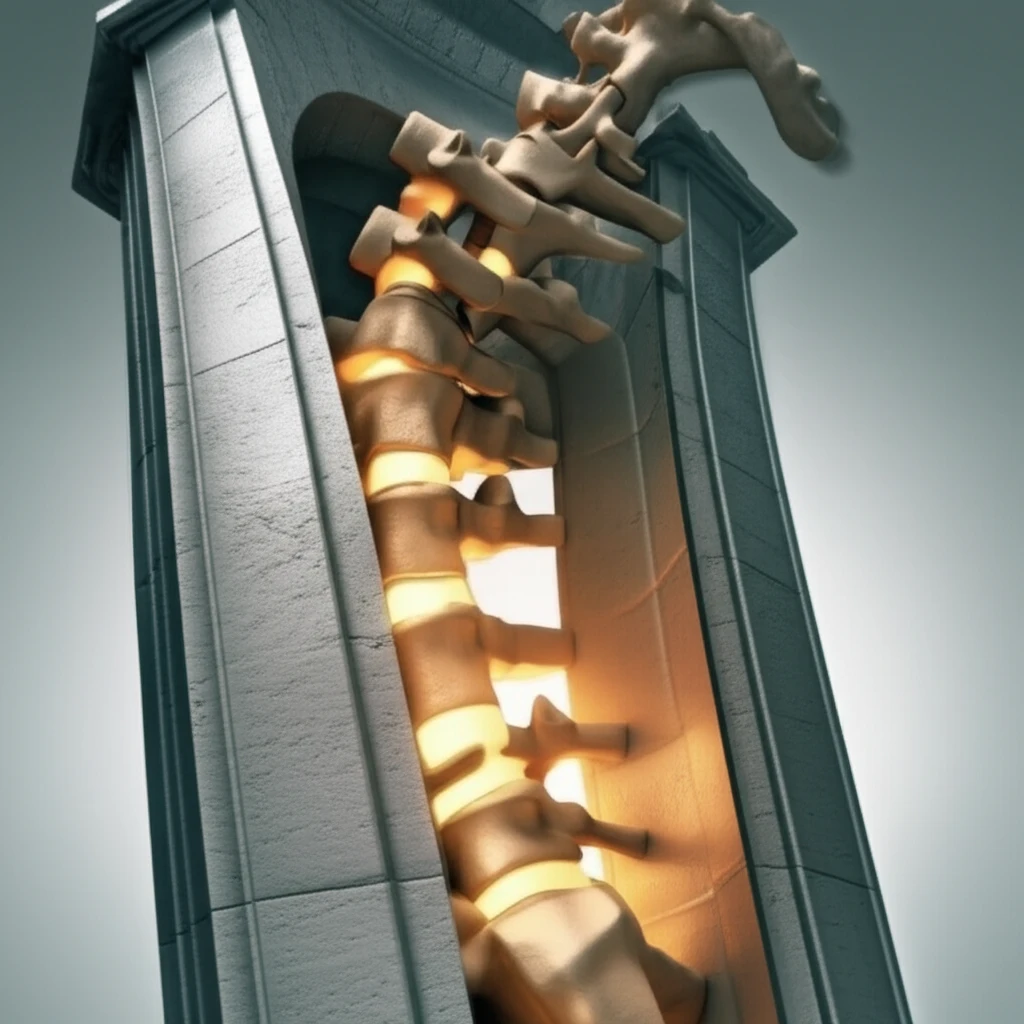
Back Pain Breakthrough: How New Surgical Techniques Offer Hope for Lasting Relief
"A deep dive into the innovative methods transforming lumbar fusion and what they mean for your future mobility."
Chronic back pain can feel like a life sentence, impacting everything from work and hobbies to simple daily tasks. For many, lumbar spinal fusion—a procedure designed to stabilize the spine and alleviate pain—offers a potential solution. Traditional methods, however, aren't without their drawbacks, including the risk of complications like subsidence, where the fusion collapses over time.
But there's good news. Advances in surgical techniques are transforming the landscape of lumbar fusion. One promising area involves the use of hyperlordotic interbody cages. These specialized implants help restore the natural curvature of the lower back, potentially leading to better long-term outcomes. Researchers are actively exploring how these cages, combined with other surgical strategies, can minimize complications and maximize relief.
A recent study published in Bio-Medical and Materials Engineering sheds light on these cutting-edge approaches. Using finite element analysis, researchers investigated the biomechanical effects of different lumbar fusion scenarios involving hyperlordotic cages. The findings offer valuable insights into optimizing surgical techniques for lasting pain relief and improved spinal stability.
Hyperlordotic Interbody Cages: Restoring Your Spine's Natural Balance

Imagine your spine as a carefully engineered arch. When that arch loses its natural curve, it can lead to instability and pain. Hyperlordotic interbody cages are designed to address this issue by restoring the proper curvature—or lordosis—in the lumbar region. These cages are inserted into the interbody space (the space between the vertebrae) during fusion surgery, providing structural support and promoting bone growth to create a solid fusion.
- The Impact of the Anterior Longitudinal Ligament (ALL): This strong ligament runs along the front of the spine. Some surgeons choose to release it during hyperlordotic cage placement to enhance lordosis correction. The study explores whether releasing the ALL significantly affects the overall biomechanics and stability of the fusion.
- The Role of Pedicle Screws: These screws are often used to provide additional stabilization during lumbar fusion. Researchers are examining how pedicle screw placement interacts with hyperlordotic cages to influence stress distribution and reduce the risk of subsidence.
- Optimizing Cage Design: Different cage designs can impact how well the fusion integrates with the surrounding bone and how much stress is placed on the endplates (the bony surfaces of the vertebrae). Studies are underway to identify the most effective cage geometries for various patient needs.
- ALL intact (M1)
- ALL resected (M2)
- ALL intact and bilateral pedicle screws (M3)
- ALL resected and bilateral pedicle screws (M4)
The Takeaway: A Personalized Approach to Spinal Fusion
The study's results suggest that ALL resection has little impact on biomechanics after lumbar fusion with a hyperlordotic interbody cage. Bilateral pedicle screws, however, significantly decreased stress in the cage and endplate, and also lowered facet contact force (except for flexion). This implies that the supplemental bilateral pedicle screws are recommended whether or not the ALL is resected. Lumbar fusion isn't a one-size-fits-all solution. The best approach depends on individual patient factors, including the severity of spinal degeneration, bone quality, and overall health. As research continues, surgeons will have even more tools and information to personalize treatment plans and optimize outcomes for lasting pain relief and improved quality of life.
